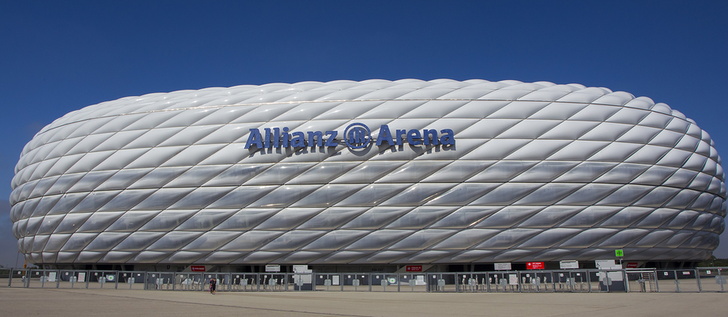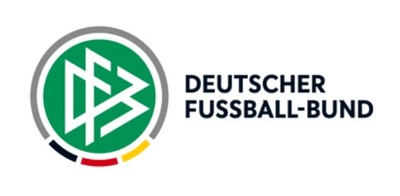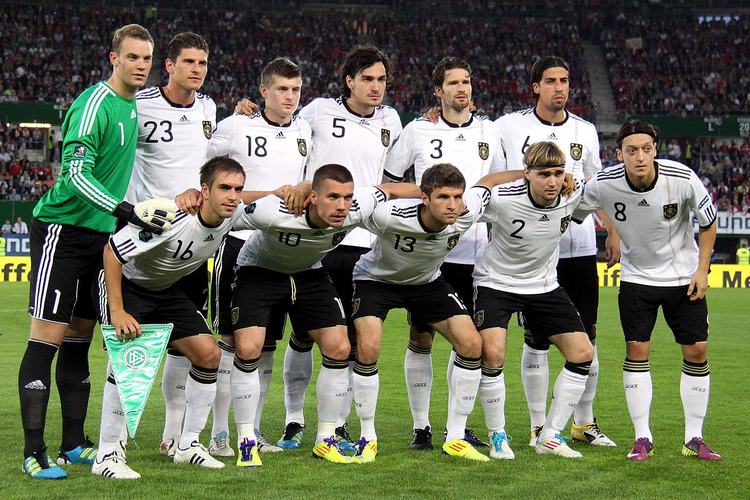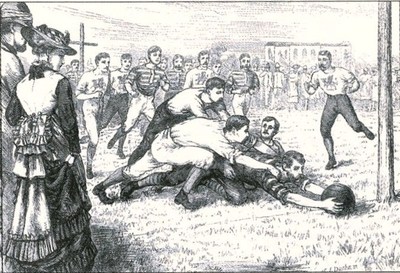
Every footballing nation has a stereotype that reflects the style of football played by the national team that represents it, as well as the teams in the top-flight division in that country.
Spain are the Mediterranean wonders who enjoy possession based ‘beautiful football’, for example, and England are the more agricultural side who tend to play long-ball and continuously talk about their 1966 World Cup win.
Germany, on the other hand, are known around the world as the organisers. The teams that set-up to play a certain system and to obey it absolutely. Stereotype or not, it’s a way of playing that has served Germany well on both an international and a domestic front.
Since it first played the game in 1908 the German national side has gone on to win four World Cup trophies and three European Championships. They are one of the most successful teams in the history of international football.
Introduction to German Football
 Domestically the top-flight in Germany, the Bundesliga, has mainly been dominated by just one team since its inception, Bayern Munich. However, unlike Portugal’s Primeira Liga, which has been won every year by just three teams apart from twice, the Bundesliga has been won by a number of different teams over the years. Bayern may be the best of them and have won it most often, especially in the modern era, but other teams such as Borussia Dortmund, Werder Bremen and Stuttgart haver all won it more than once over the years.
Domestically the top-flight in Germany, the Bundesliga, has mainly been dominated by just one team since its inception, Bayern Munich. However, unlike Portugal’s Primeira Liga, which has been won every year by just three teams apart from twice, the Bundesliga has been won by a number of different teams over the years. Bayern may be the best of them and have won it most often, especially in the modern era, but other teams such as Borussia Dortmund, Werder Bremen and Stuttgart haver all won it more than once over the years.
The competitiveness of German football is possibly why German teams have historically done quite well in European competitions. The Champions League, which is the current branding of the competition previously known as the European Cup, has been won seven times by a total of three clubs: Bayern, Dortmund and Hamburg. Meanwhile the Europa League, which used to be called the UEFA Cup, has been won six times by five different teams: Bayern, Mönchengladbach, Leverkusen, Eintracht Frankfurt and Schalke.
The UEFA Cup Winners’ Cup has been won once apiece by Bayern, Werder Bremen, Borussia Dortmund, Hamburg and Magdeburg. Only Bayern Munich have won the UEFA Super Cup, but the UEFA Intertoto Cup has been won by a German team on nine different occasions. Karlsruhe, Schalke, Bremen, Stuttgart, Hertha Berlin and Hamburg have all won it at least once during their existence.
Football is incredibly popular in Germany. So much so, in fact, that average attendances across the Bundesliga regularly exceed 45,000 supporters, meaning that it is the second highest attended sport in the world after only the National Football League in America. In terms of purely football, the German top-flight is actually the most attended league anywhere in the world.
Here you’ll learn about the different types of stadiums in the Bundesliga, the history of football in Germany and a little bit of information about the national side itself. You’ll soon discover that Germany is about so much more than bratwurst, sauerkraut and steins of lager.
German Stadiums

The obsession with football in Germany means that the stadiums are pretty impressive across the board. The biggest grounds are capable of welcoming in over 70,000 supporters and even the smaller ones tend to have capacities of around 20,000+.
The safe-seating methods applied to grounds such as Signal Iduna Park, the home of Borussia Dortmund, mean that over 80,000 fans can enter the ground and create a phenomenal atmosphere at even the least important domestic match.
The majority of the most recently built stadiums, such as Bayern Munich’s Allianz Arena, tend to boast a ‘Bowl Style’ design of continuous seating around the stadium.
This is common with European grounds and has been adopted more recently by grounds in England, too. Before that, English stadiums tended to be made up of four different stands on each side of the pitch, with some of the older and less expensive German stadiums also following that pattern.
German Leagues
 Eighteen teams play in the Bundesliga each season, with a total of fifty-four having competed in it since its inception at the time of writing. A system of relegation to and promotion from the imaginatively named 2. Bundesliga is in operation.
Eighteen teams play in the Bundesliga each season, with a total of fifty-four having competed in it since its inception at the time of writing. A system of relegation to and promotion from the imaginatively named 2. Bundesliga is in operation.
Below that is 3. Liga, the third-tier of German football. These three levels are the only ones in Germany that have just one single division in them, with the rest of the footballing pyramid containing parallel divisions that cover geographical areas. Each division operates the same notion of promotion and relegation as the Bundesligen, however, so it’s entirely possible (though extremely unlikely) that an amateur football club at the bottom of the pile could rise up to win the Bundesliga.
Eighteen teams compete in the Bundesliga and 2. Bundesliga, with a further twenty playing in 3. Liga. That means that 56 teams compete in the upper tiers of German football with over 32,000 more spread out through the other 2,000+ divisions in the rest of Germany. The Bundesliga and 2. Bundesliga are operated by the Deutsche Fußball Liga, or German Football League in English. 3. Liga is operated by the German FA, known as the Deutscher Fußball-Bund, which is also responsible for the administration of the rest of the football league system in Germany.
German National Team

The ex-England international footballer and TV host Gary Lineker once said, “Football is a simple game. Twenty-two men chase a ball for 90 minutes and at the end the Germans always win”. It’s a funny phrase but it also sums up how good at the game Germany have been over the years. When the Second World War ended and Germany found itself to be a divided nation, that didn’t stop them conquering the football world. West Germany and East Germany regularly competed in the major competitions, though it was West Germany that were the most successful.
Germany/West Germany have won the World Cup four times; in 1954, 1974, 1990 and 2014, only failing to make the semi-final stage of the competition on six occasions. They have won the European Championship three times, in 1972, 1980 and 1996 and have reached the semi-final stage six times, finishing as runners-up three times. Only Brazil are more successful on the international stage than Germany.
Die Mannschaft play their home games at numerous locations throughout Germany, though most commonly at the Allianz Arena or at the Olympic Stadium in Berlin. The latter is also commonly used as the venue for the German Cup Final and so could be considered to be the national stadium of Germany.
Key Stats
| Germany National Team Statistics | |
|---|---|
| Year Formed | 1908 |
| Home Stadium | Primarily Olympiastadion Berlin |
| Stadium Capacity | 74,475 |
| Major Honours | World Cup (1954, 1974, 1990, 2014), European Championships (1972, 1980, 1996) |
| Current Manager | Joachim Löw |
| Top Scorer | Miroslav Klose (71) |
| Most Caps | Lothar Matthäus (150) |
| Best Performance at World Cup | Winners (1954, 1974, 1990, 2014) |
| Best Performance at European Championships | Winners (1972, 1980, 1996) |
| Kit Colours | Black and White (Home), Green, Black and White (Away) |
History Of Football In Germany
 Football was popular in Germany from the first moment that it was introduced to the country and its popularity grew exponentially in the proceeding years.
Football was popular in Germany from the first moment that it was introduced to the country and its popularity grew exponentially in the proceeding years.
The first game of football as it was played back then took place in 1874, when two schoolteachers organised a game with a round ball that they had acquired from England. It was far more similar to the game we call rugby than it was to football, however, so it would have looked odd to a modern day football fan.
The first club in Germany was the Dresden English Football Club and it was for Englishmen who lived and worked around the city of Dresden.
It was formed in 1874 not long after that first match was played in Braunschweig, and soon other clubs were formed for them to play against in the likes of Berlin and Hamburg.
